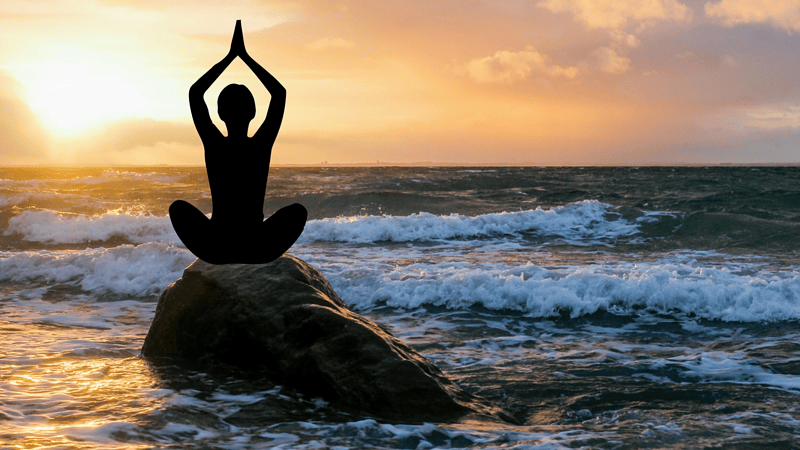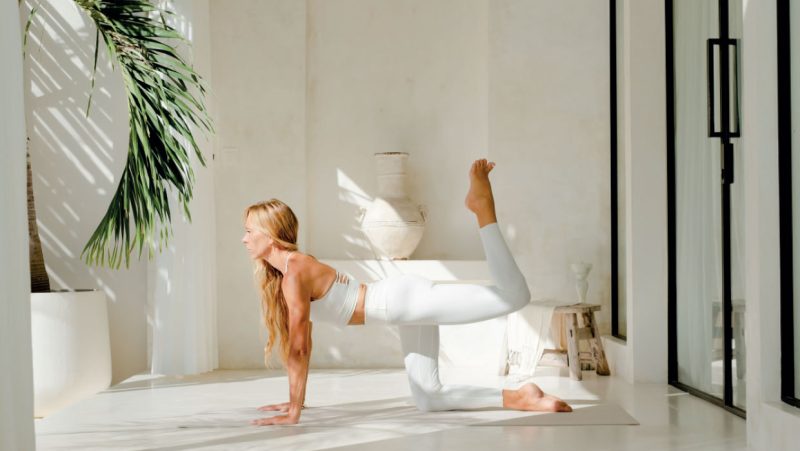
How Yoga Classes for Older Adults Build Confidence in Movement and Balance
Discover how yoga helps older adults build balance, confidence and mental well-being.
Reading time: 4 minutes
Aging gracefully is about finding new ways to stay strong, centered and confident. Yoga offers a holistic approach to moving your body, calming your mind and reconnecting with yourself. It's more than exercise — it celebrates vitality and independence.
From better sleep to sharper focus, the benefits go far beyond the mat. These are ways in which yoga enables you to move with confidence, balance and a sense of ease that radiates beauty from the inside out.
How Yoga Supports Balance and Mobility as We Age
Consistent practice of various poses that stretch and elongate different muscle groups can greatly enhance joint range of motion and overall mobility. Many yoga poses require one to support one's body weight in various positions, which helps develop muscle strength. For instance, poses like the plank, chair pose and various arm balances are particularly effective for strengthening muscles throughout the body.
Additionally, yoga includes poses that challenge and enhance balance, such as the Tree Pose and Warrior III. These movements activate core muscles and improve proprioception — the awareness of the body's position in space — leading to better balance and overall stability.
The lifetime prevalence of yoga practice in the U.S. is as high as 13.2% among the general population. This trend is on the rise, especially among older women who report better overall health. Women who practice yoga tend to have a more favorable body image and greater self-esteem compared to those who do not engage in yoga.
4 Ways Yoga Classes Empower Older Women to Move with Confidence
These are four ways yoga helps move with confidence, strength and joy — proving that age is another reason to shine brighter.
1. Strengthening Body and Mind Through Movement
Staying independent is a top goal for many older adults, and yoga is one of the most versatile ways to achieve it. Yoga offers numerous health benefits, such as lowering blood glucose in those with type 2 diabetes and easing depression and anxiety. It can also reduce discomfort and improve sleep and overall quality of life. Because it combines physical, mental and emotional dimensions, yoga promotes wellness on multiple levels.
Yoga improves cardiovascular function and cognitive health to ease the side effects of conditions like osteoporosis and even breast cancer. It can also enhance physical fitness and independence in older adults. In other words, yoga is more than gentle — it’s genuinely transformative.
2. Reducing Fear of Falling
Falls rank as the second leading cause of unintentional injury-related deaths globally. Adults over the age of 60 experience the highest number of fatal falls. Older individuals face the greatest likelihood of death or severe injury from a fall and this risk escalates with advancing age. Experts estimate that every year in the United States, one in four older adults experiences a fall.
For instance, 20 to 30% of older adults who experience a fall sustain moderate to severe injuries, including bruises, hip fractures or head trauma. Yoga practices offer a promising approach for improving balance, similar to balance control techniques taught in clinical settings, because yoga connects the mind and body. Yoga improves strength, flexibility, range of motion and endurance. It also emphasizes body awareness, leading to better balance and quality of life, especially for older adults.
3. Boosting Confidence and Connection Through Empowerment
Encouraging mental and cognitive wellness is essential for enhancing seniors' quality of life and overall well-being. This includes remaining socially engaged, participating in fulfilling activities, effectively managing stress and seeking assistance when necessary.
Practicing yoga in a nurturing community or group environment can enhance feelings of belonging and social support, both of which are vital for emotional health. Building connections with others with similar experiences and goals can help reduce feelings of isolation and loneliness.
4. Calming the Mind and Nurturing Emotional Well-Being
Yoga can yield significant neurological and mental health benefits, particularly for older adults. Consistent practice can result in positive anatomical changes in areas of the brain linked to memory, focus, and emotional regulation. It also impacts anxiety and depression. For instance, attending 90-minute yoga classes once or twice a week significantly reduces anxiety.
Yoga combines physical postures, breath control and meditation. This latter reduces stress and improves cognitive function, further supporting healthy aging. Breathing techniques help regulate energy and calm the nervous system through simple yet powerful exercises. By concentrating on breathing, individuals can foster tranquility, alleviate stress, and enhance their focus and mental clarity.
Does Yoga Help Seniors With Balance?
Yoga is an excellent way for older adults to find balance, inside and out. The practice transcends mere flexibility — it embodies freedom. Every class is an opportunity to reconnect with your body, build confidence and find a sense of calm. Whether you join a community class or practice at home, the benefits extend beyond the physical. When you find your balance on the mat, you see it in yourself — and that’s the real glow that never fades.





